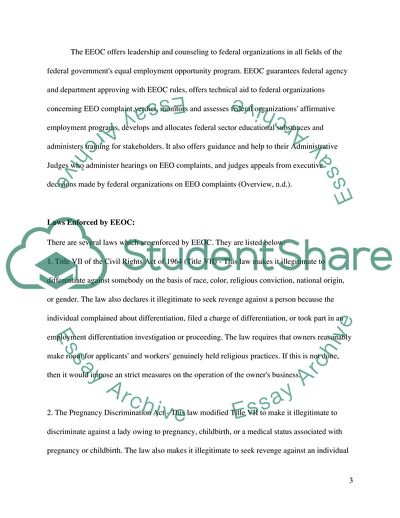Cite this document
(The Equal Employment Opportunity Commission, What It Stands for in Term Paper, n.d.)
The Equal Employment Opportunity Commission, What It Stands for in Term Paper. Retrieved from https://studentshare.org/human-resources/1729435-the-equal-employment-opportunity-commission-what-it-stands-for-in-america
The Equal Employment Opportunity Commission, What It Stands for in Term Paper. Retrieved from https://studentshare.org/human-resources/1729435-the-equal-employment-opportunity-commission-what-it-stands-for-in-america
(The Equal Employment Opportunity Commission, What It Stands for in Term Paper)
The Equal Employment Opportunity Commission, What It Stands for in Term Paper. https://studentshare.org/human-resources/1729435-the-equal-employment-opportunity-commission-what-it-stands-for-in-america.
The Equal Employment Opportunity Commission, What It Stands for in Term Paper. https://studentshare.org/human-resources/1729435-the-equal-employment-opportunity-commission-what-it-stands-for-in-america.
“The Equal Employment Opportunity Commission, What It Stands for in Term Paper”. https://studentshare.org/human-resources/1729435-the-equal-employment-opportunity-commission-what-it-stands-for-in-america.


